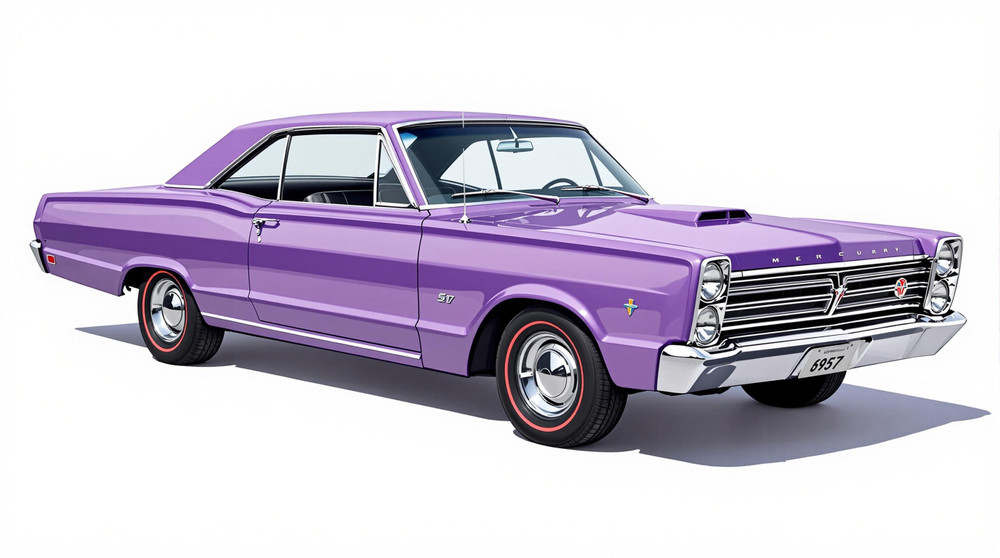Image of 1967 Mercury Comet, Note: These illustrations use artistic license and may differ from actual historical models.
Performance Metrics
Fundamental Metrics
Emotional Appeal
MMP Rating
| Engine Specifications | |
|---|---|
| Engine Options: | 289 CID 2V V-8, 390 CID 4V V-8 |
| Displacement Range: | 289-390 cu in. |
| Horsepower Range: | 200-335 hp |
| Torque: | 282-427 lb-ft |
| Compression Ratio: | 9.3:1 (289 CID), 10.5:1 (390 CID) |
| Ignition System: | Conventional, distributor |
| Cooling System: | Liquid-cooled |
| Performance Specifications | |
| 0-60 Time: | 8.0 seconds (289 CID), 6.5 seconds (390 CID) |
| 1/4 Mile Time: | 16.0 seconds (289 CID), 14.5 seconds (390 CID) |
| Top Speed: | 115 mph (289 CID), 130 mph (390 CID) |
| Transmission and Drive | |
| Drive Type: | Rear-wheel drive |
| Transmission Type: | 3-speed manual, 4-speed manual, 3-speed automatic |
| Fuel and Efficiency | |
| Fuel System Type: | Carburetor |
| MPG: | 15-18 mpg |
| Dimensions and Brakes | |
| Brakes: | Front disc, rear drum |
| Wheelbase: | 116 in. |
| Weight: | 3,000-3,500 lbs |
Note: Specifications for classic cars are given to the best of our ability, considering the limited and variant data available.
Unveiling the 1967 Mercury Comet: A Blend of Muscle and Elegance
The 1967 Mercury Comet emerges as a testament to American automotive ingenuity, capturing the essence of a bygone era of muscle cars with a touch of luxury. Born from the stables of Mercury, a division of the Ford Motor Company, this model year marked a significant evolution in the Comet's lineage. The Comet's journey, which began in 1960 as a compact car, saw it mature into a mid-sized contender by 1967, ready to take on the muscle car market with poise and power. A unique fact that car enthusiasts revel in is that the '67 Comet shared its platform with its cousin, the Ford Fairlane, yet it carved out its own distinct identity with unique styling cues and trim options.
Design and Innovation: The Aesthetics of Power
The exterior of the 1967 Mercury Comet boasted a long, lean silhouette with sharp lines that exuded speed even at a standstill. Its aggressive front grille and stacked headlights were complemented by subtle chrome accents that ran along the body, culminating in an elegant yet sporty profile. Inside, occupants were greeted with an interior that balanced comfort with performance. High-quality vinyl or optional leather upholstery adorned the seats, while woodgrain accents and chrome trim added to the upscale ambiance.
Technologically, the Comet was ahead of its time with available features such as power steering and brakes, air conditioning, and even an AM/FM radio—luxuries that were coveted in the '60s. Color options ranged from subdued to vibrant, with hues like "Frost Turquoise" and "Candyapple Red" being popular picks among buyers. The Comet was offered in several body styles including two-door coupes, convertibles, four-door sedans, and station wagons; however, it was the Cyclone GT hardtop coupe that captured hearts with its performance-oriented stance.
Historical Significance: A Legacy Cast in Steel
The 1967 Mercury Comet made an indelible mark on automotive history by bridging the gap between everyday practicality and high-octane performance. It stood out from competitors with its refined design and robust engine options that ranged from sensible inline-sixes to thunderous V8s. The Cyclone GT model, in particular, became synonymous with Mercury's racing heritage when it paced the Indianapolis 500 that year—a nod to its potent capabilities.
Performance and Handling: The Roar of Nostalgia
Underneath the hood lay the heart of the Comet's performance—a selection of engines culminating in the formidable 427 cubic inch V8 that propelled this beast to impressive speeds. While exact figures vary, a well-tuned Cyclone GT could sprint from 0-60 mph in under seven seconds—a remarkable feat for its time. Drivers often recount how handling was surprisingly nimble for a mid-sized car; it took on corners with confidence and absorbed road imperfections gracefully. The symphony of the engine's growl coupled with the tactile feedback through the steering wheel made for an exhilarating driving experience.
Ownership Experience: More Than Just a Car
The 1967 Mercury Comet served multiple roles—from daily commuting workhorse to weekend drag strip warrior. Owners found maintenance relatively straightforward thanks to shared components with other Ford models. However, some parts specific to higher-end trims or engines could be rarer and more challenging to source.
Fun Facts: The Comet's Trailblazing Tales
Did you know that some Comets were turned into "Cobra Jet" versions featuring Ford's legendary 428 Cobra Jet engine? These rare beasts are highly sought after today. Despite criticisms over time about weight distribution and fuel economy (common issues among muscle cars), the Comet has remained a beloved icon.
Collector's Information: A Star Amongst Classics
The value range for a 1967 Mercury Comet can vary widely depending on condition, originality, and specific model variant—with Cyclone GTs commanding premium prices. Estimates suggest that tens of thousands were produced across all trims; however, numbers for performance models like the Cyclone GT are much lower. In terms of appreciation, well-preserved or restored Comets have seen steady increases in value over time; it wouldn't be surprising for top-tier models to fetch upwards of $50,000 or more at auction today.
Conclusion: The Enduring Allure of the '67 Comet
The 1967 Mercury Comet stands as an enduring symbol of American automotive culture—a harmonious blend of style, power, and innovation that continues to captivate enthusiasts around the globe. Whether it's remembered as a childhood dream car or revered as a collector's gem, its legacy is as vibrant today as it was over half a century ago.
1967 Mercury Comet Catalog of Parts
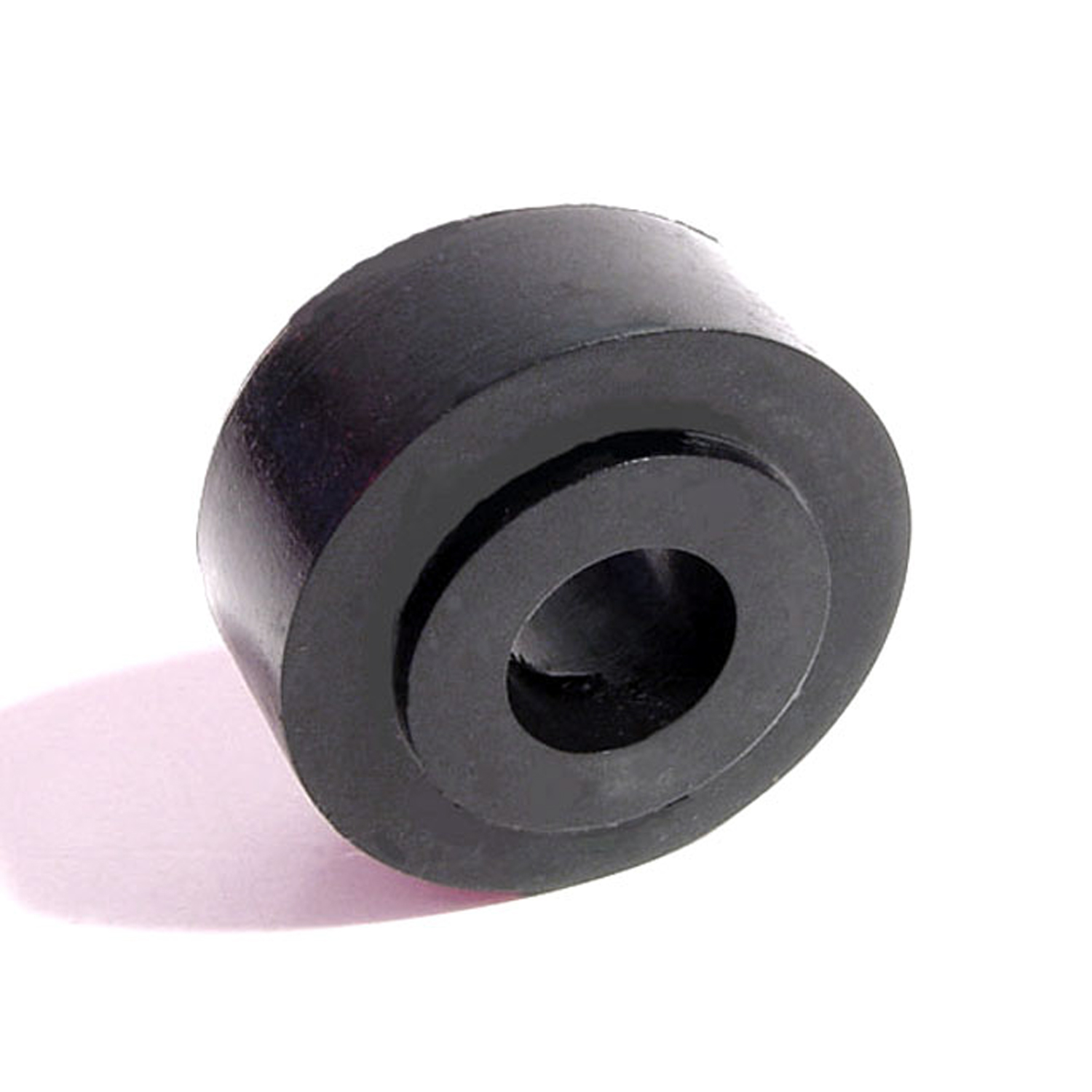 1967 Mercury Comet Shock Absorber Grommet. 1-1/4" bottom O.D., 1" high-BN 12Shock Absorber Grommet. 1-1/4" bottom O.D., 1" high., with 3/4" I.D. Each
1967 Mercury Comet Shock Absorber Grommet. 1-1/4" bottom O.D., 1" high-BN 12Shock Absorber Grommet. 1-1/4" bottom O.D., 1" high., with 3/4" I.D. Each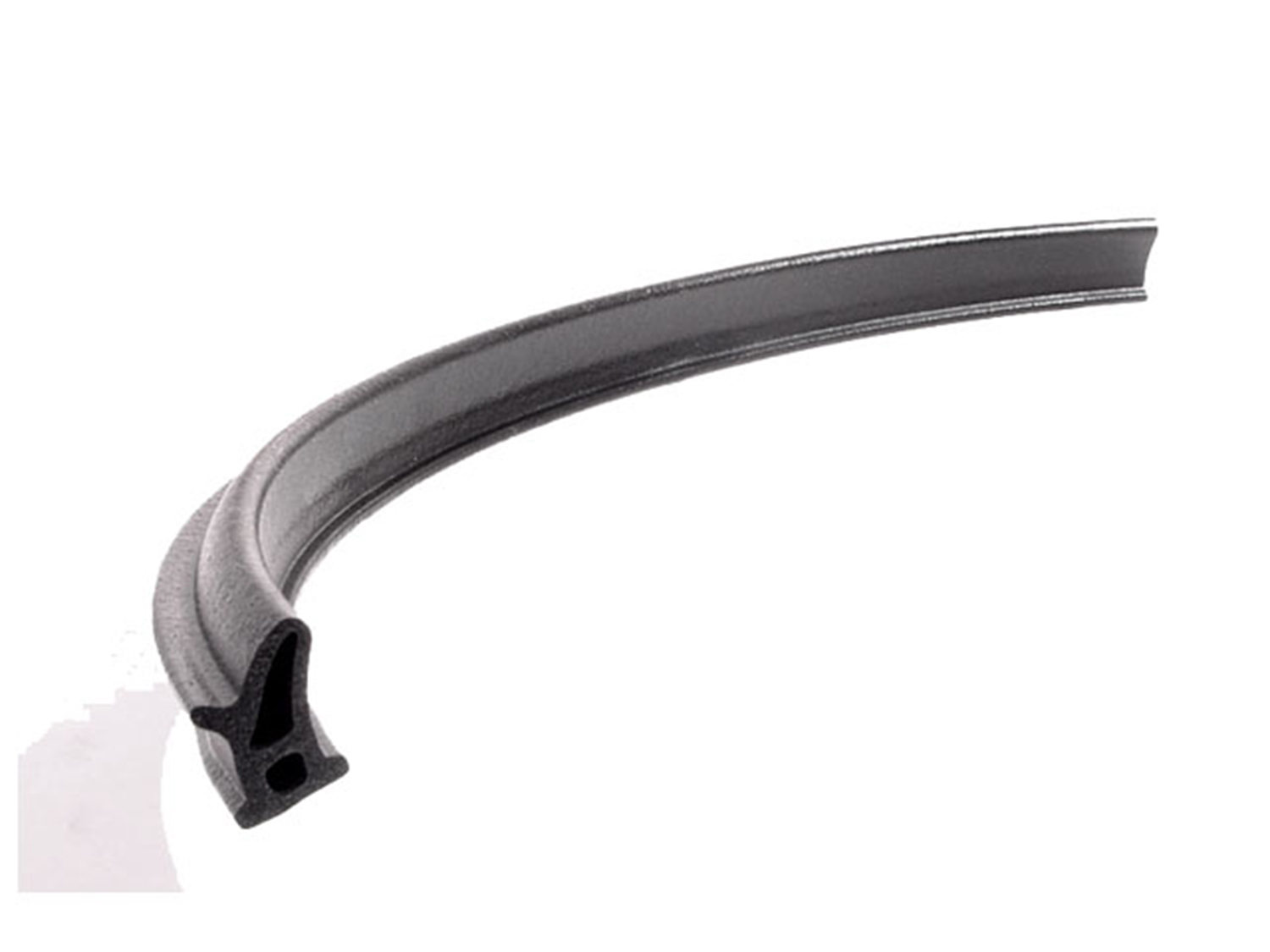 1967 Mercury Comet Door Side Seal extrusion with proper installation clips-C/LP 40-FDoor Side Seal extrusion with proper installation clips. Clips installed 4" on center. Sold by the foot.
1967 Mercury Comet Door Side Seal extrusion with proper installation clips-C/LP 40-FDoor Side Seal extrusion with proper installation clips. Clips installed 4" on center. Sold by the foot.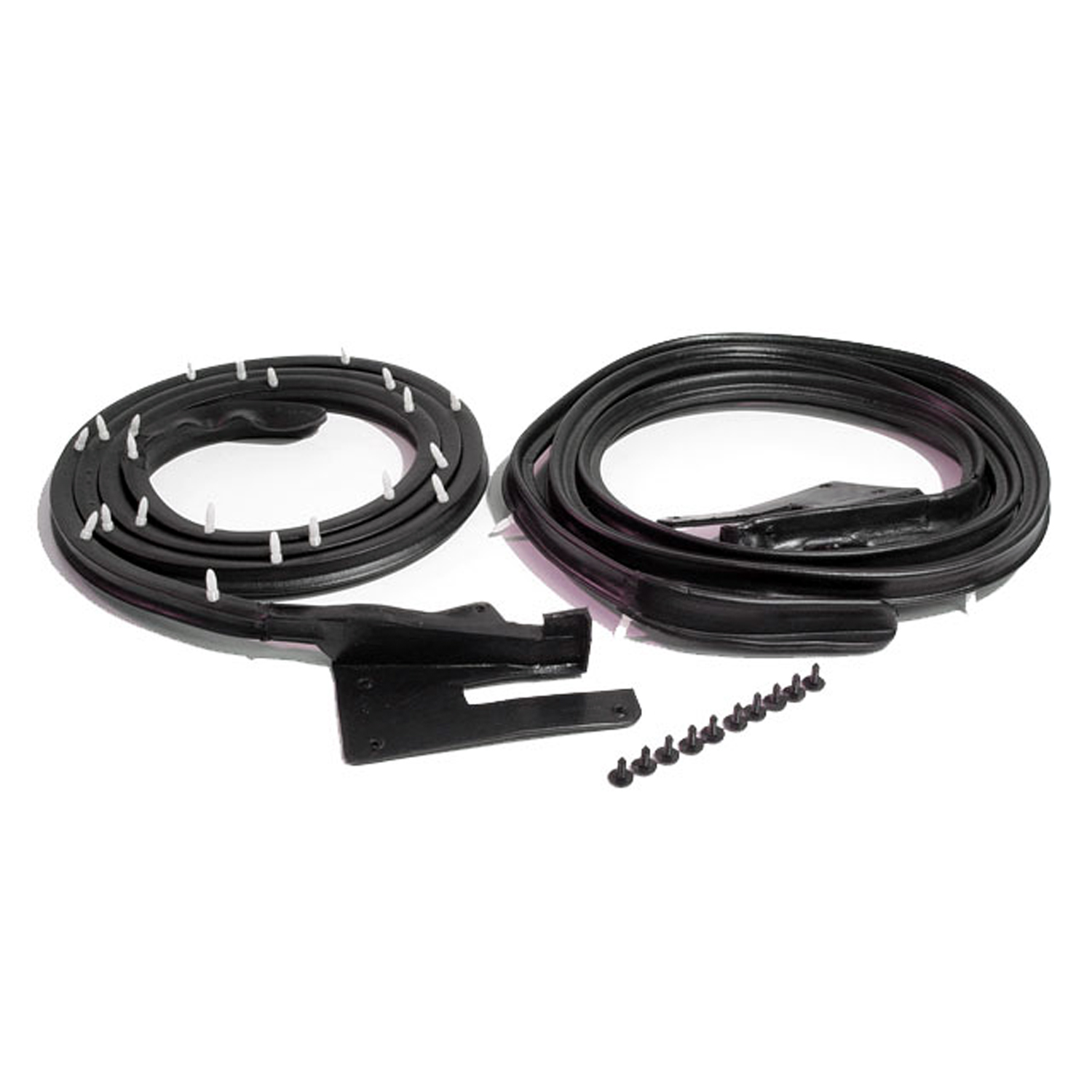 1967 Mercury Comet Molded Door Seals for 2-Door Hardtops and Convertibles-LM 14-BMolded Door Seals for 2-Door Hardtops and Convertibles. Made with molded ends and clips. Nice reproduction. Pair R&L
1967 Mercury Comet Molded Door Seals for 2-Door Hardtops and Convertibles-LM 14-BMolded Door Seals for 2-Door Hardtops and Convertibles. Made with molded ends and clips. Nice reproduction. Pair R&L 1967 Mercury Comet Roof Rail Seal. Sold by the foot-LP 110-FARoof Rail Seal. Sold by the foot
1967 Mercury Comet Roof Rail Seal. Sold by the foot-LP 110-FARoof Rail Seal. Sold by the foot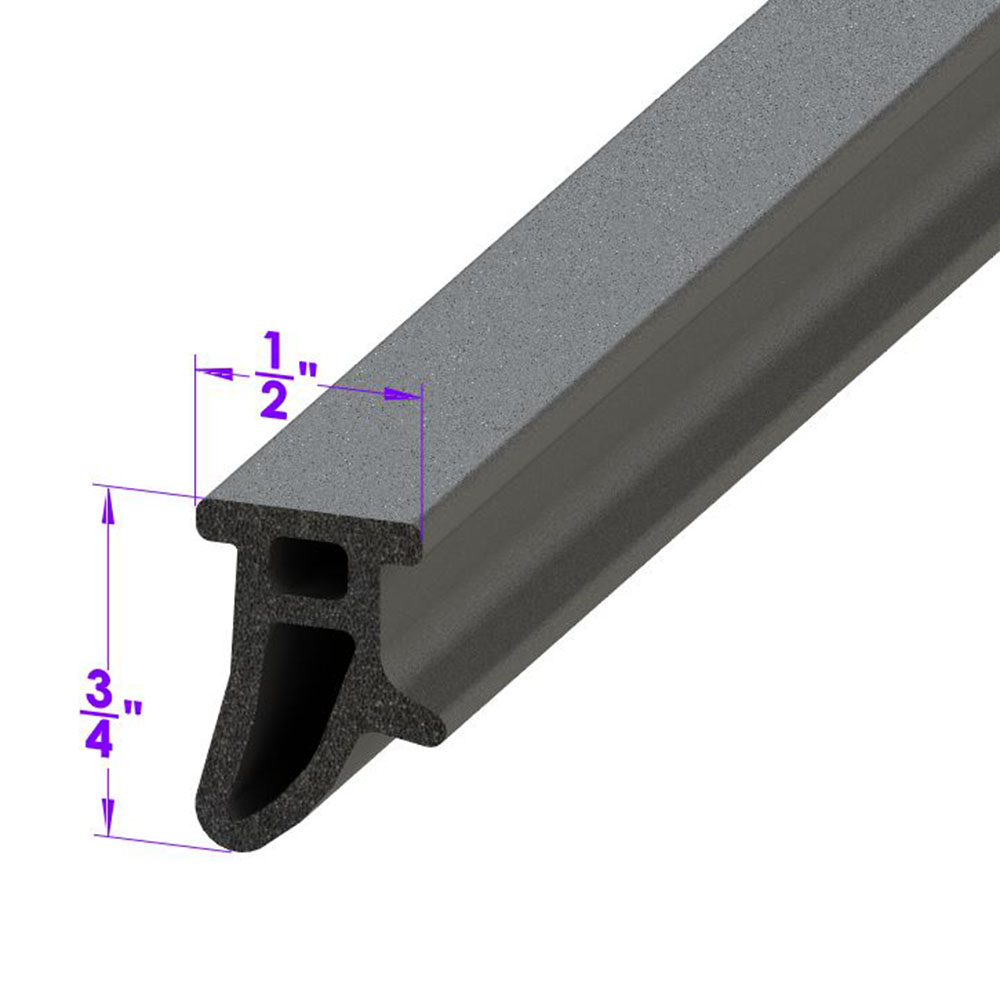 1967 Mercury Comet Door Side Seal, Without Clips (for seal with clips-LP 40-FDoor Side Seal, Without Clips (for seal with clips, see C/LP 40-F). Sold by the foot
1967 Mercury Comet Door Side Seal, Without Clips (for seal with clips-LP 40-FDoor Side Seal, Without Clips (for seal with clips, see C/LP 40-F). Sold by the foot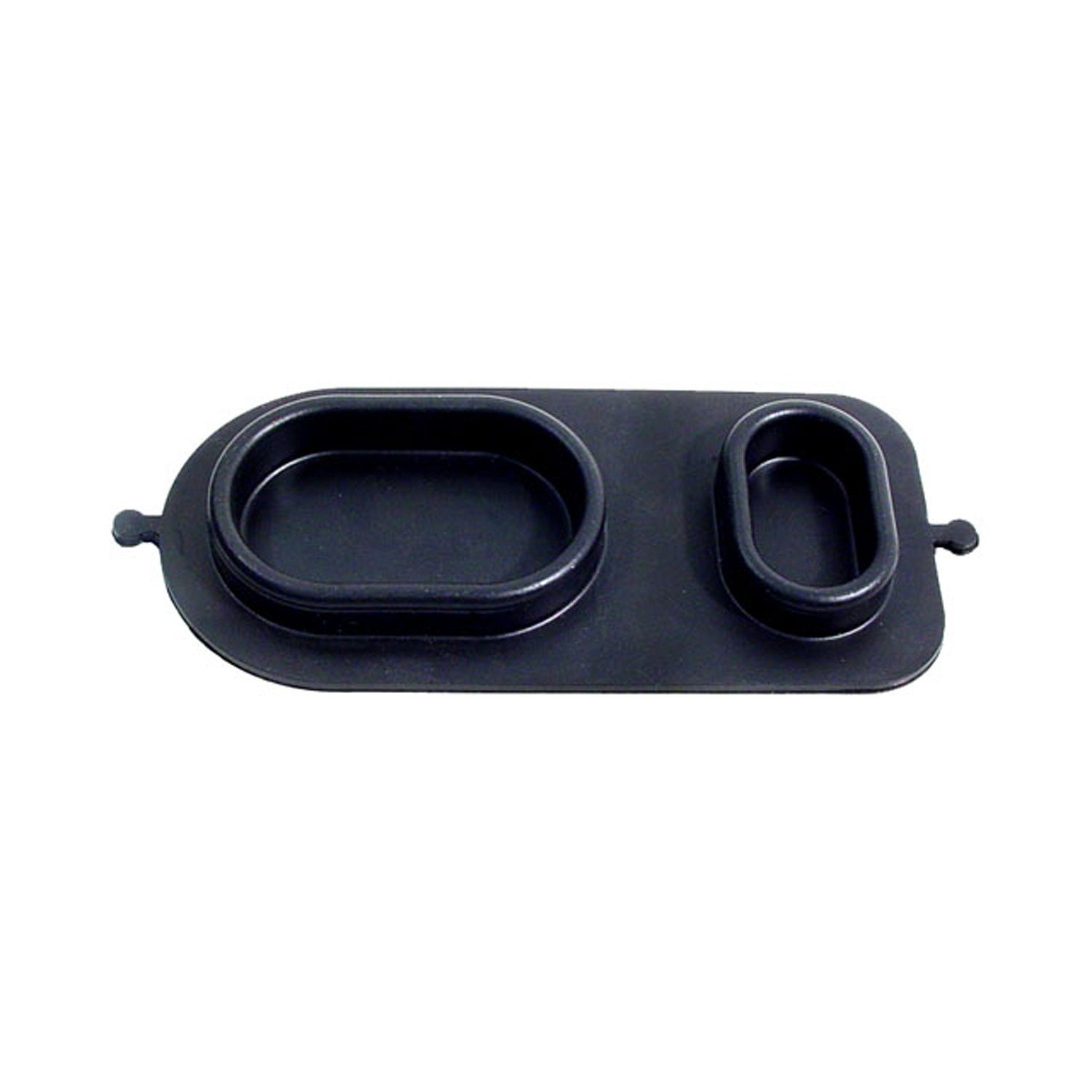 1967 Mercury Comet Brake Master Cylinder Cover Seal. Replaces OEM #5470861-RP 2-CBrake Master Cylinder Cover Seal. Replaces OEM #5470861. 5-9/16" long, 2-5/8" wide. Each
1967 Mercury Comet Brake Master Cylinder Cover Seal. Replaces OEM #5470861-RP 2-CBrake Master Cylinder Cover Seal. Replaces OEM #5470861. 5-9/16" long, 2-5/8" wide. Each 1967 Mercury Comet Brake Booster Boot. Each-RP 32-AABrake Booster Boot. Each
1967 Mercury Comet Brake Booster Boot. Each-RP 32-AABrake Booster Boot. Each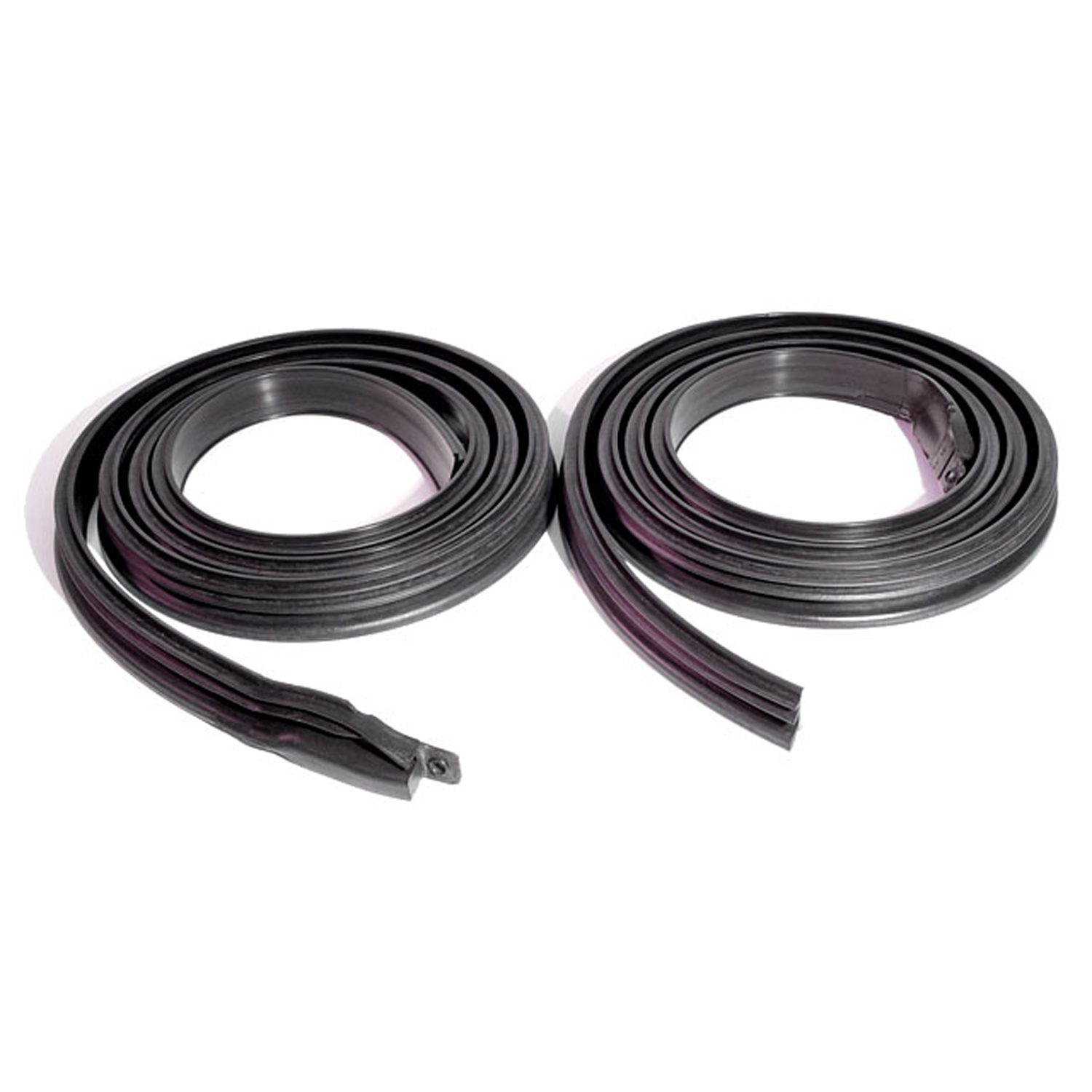 1967 Mercury Comet Molded Roof Rail Seals, for 2-Door Hardtop. Pair R&L-RR 6800Molded Roof Rail Seals, for 2-Door Hardtop. Pair R&L
1967 Mercury Comet Molded Roof Rail Seals, for 2-Door Hardtop. Pair R&L-RR 6800Molded Roof Rail Seals, for 2-Door Hardtop. Pair R&L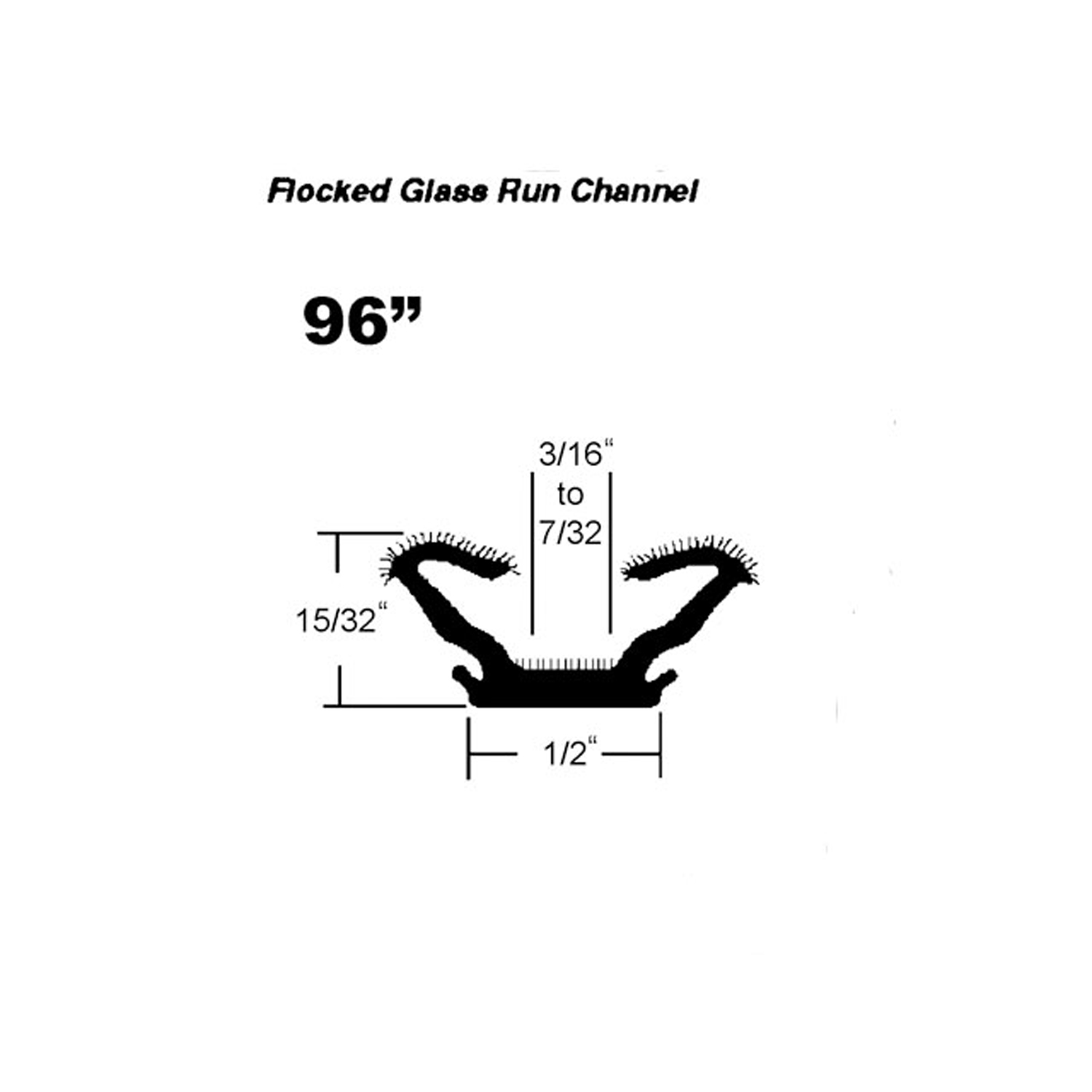 1967 Mercury Comet Flocked Window Channel. 96" Piece. Each-WC 21-96Flocked Window Channel. 96" Piece. Each
1967 Mercury Comet Flocked Window Channel. 96" Piece. Each-WC 21-96Flocked Window Channel. 96" Piece. Each 1967 Mercury Comet Windshield Reveal Molding Clip. Made of steel. Each-WF 228-AWindshield Reveal Molding Clip. Made of steel. Each
1967 Mercury Comet Windshield Reveal Molding Clip. Made of steel. Each-WF 228-AWindshield Reveal Molding Clip. Made of steel. EachWhy Choose Metro?
For over 100 years, Metro Moulded Parts has been the pinnacle of quality in classic car restoration parts. Our commitment to precision and authenticity in every component ensures a perfect fit and an OEM-level appearance.
- Expert Craftsmanship & Quality: Each part is a testament to our dedication to reliability and perfection, crafted from original designs and thoroughly tested.
- Advanced Technology: We use cutting-edge techniques to create flawless, long-lasting parts that surpass others in performance.
- SuperSoft Sponge – The Ultimate Door Seal: Not only are our door seals 30% softer than competitors', but they're also guaranteed to never leak. They effectively reduce wind and road noise, enhancing your classic car's comfort and driving experience.
- Proudly American: Our parts are a product of American craftsmanship, made in the USA with a spirit of excellence and heritage.
- Unrivaled Warranty: We back our products with a 30-year industry-leading warranty, a testament to our confidence in their quality.
Join us in preserving the legacy of classic cars with parts that are crafted for perfection, not just made.

